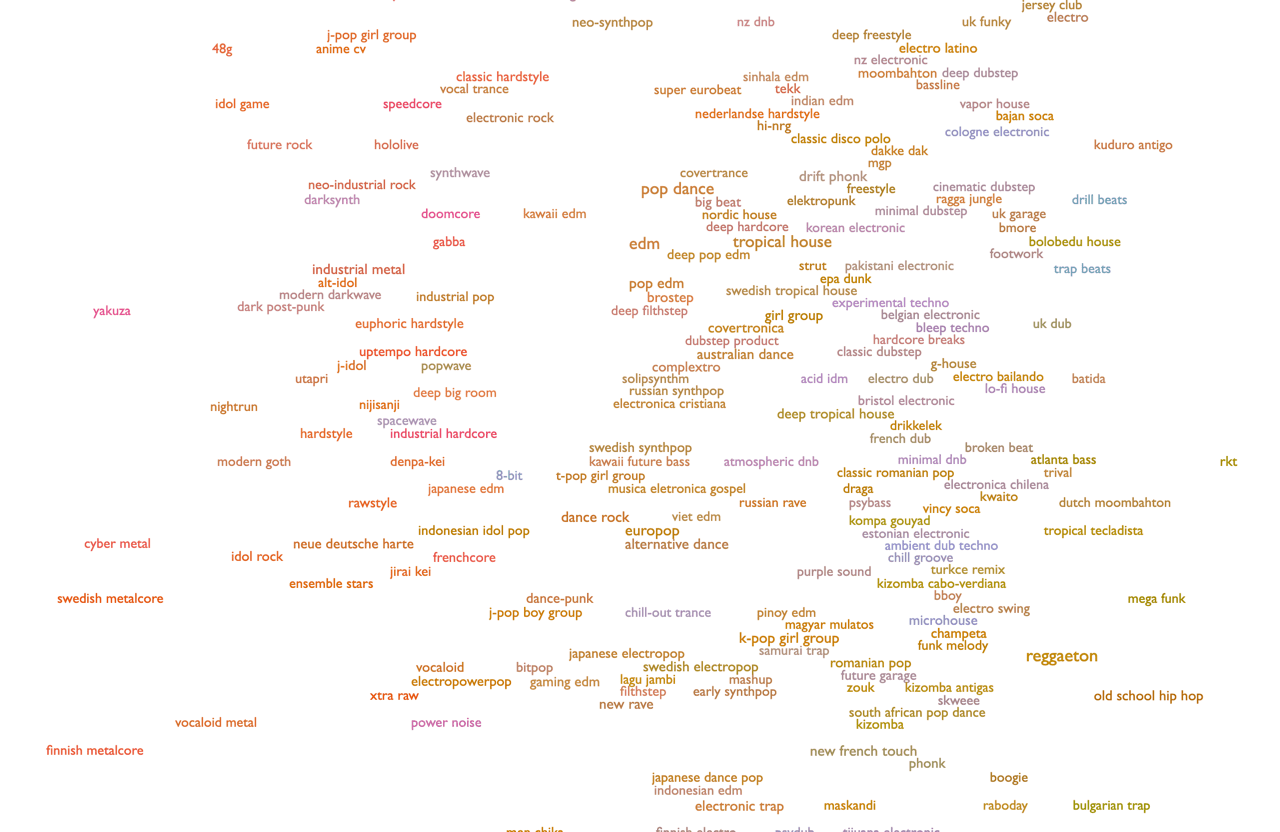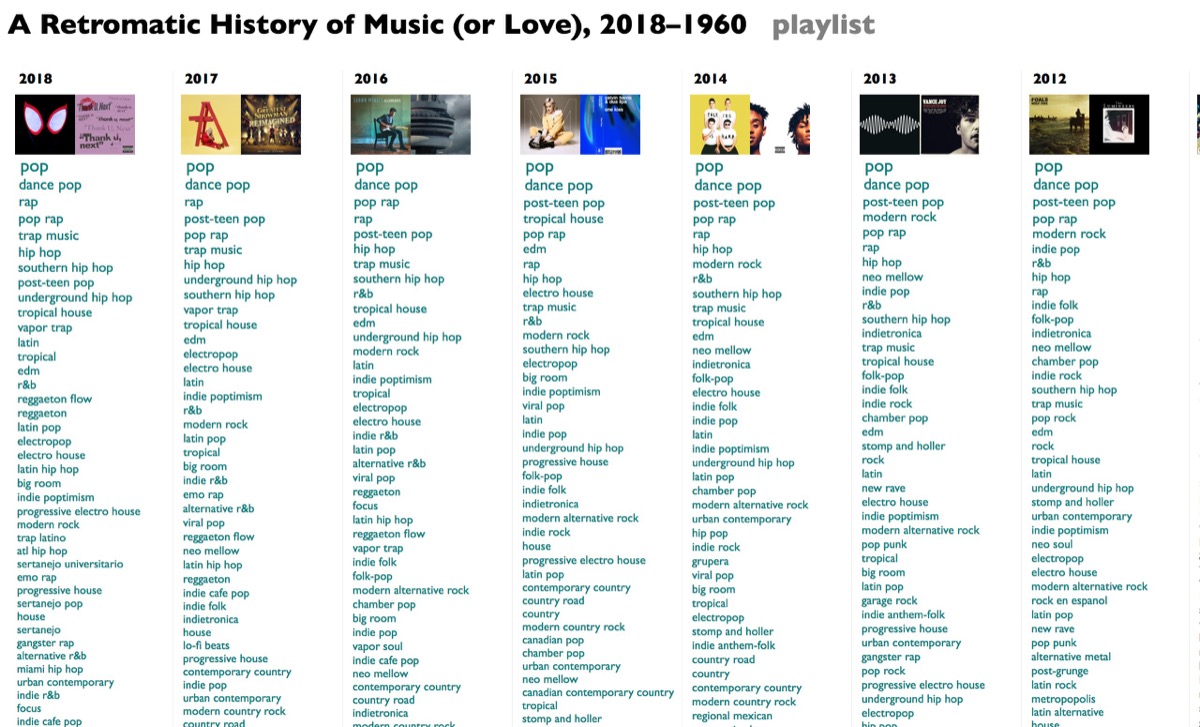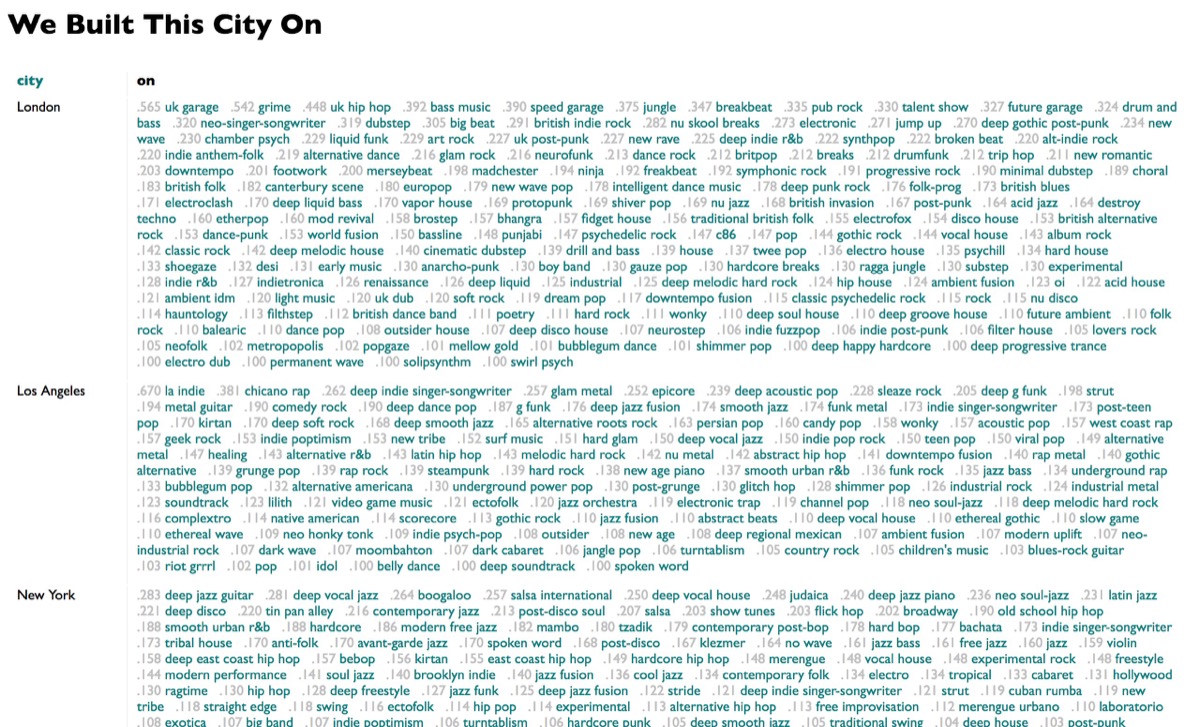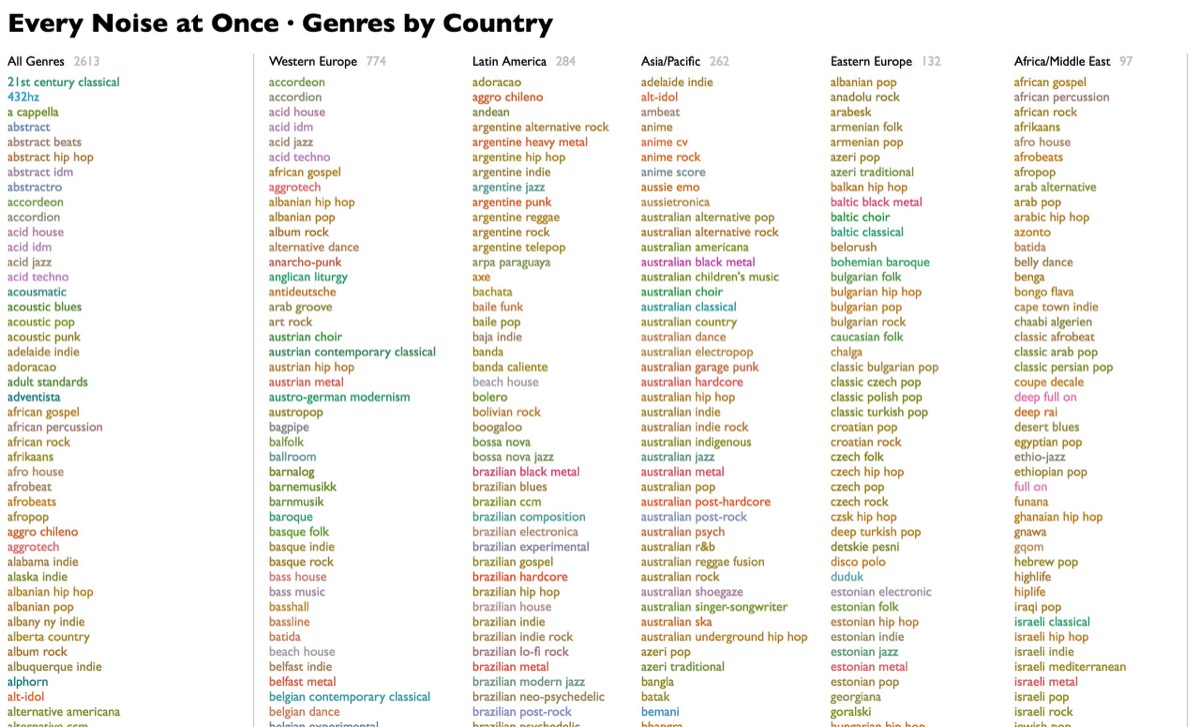The Echo Nest(The Echo Nest Blog(アーカイブ))のprincipal engineerであるGlenn McDonaldの手によるワードマップ。
musical intelligence companyを標榜するに相応しく、(ざっくり言うとですが)楽曲やアーティストを様々な角度で分析し適切にパラメータ化しています。
かつてWIRED.jpでも「世界400以上の音楽サーヴィスが利用する、リコメンデーションエンジン「The Echo Nest」 」と紹介され、2014年にはSpotifyの一員となりました(The Echo Nest Blog : The Echo Nest Joins Spotify!(アーカイブ))。
昨年のMusic Hack Day TokyoにもThe Echo Nestの名前がちらりと見えます(音楽をハックする:Music Hack Day東京で開発された、注目の21作品 « WIRED.jp)。
いずれも、音楽市場の動向に詳しい榎本さんの記事ですね。
各ジャンルのテイストを掘り下げて勉強するにはちょうどよさげ。
マトリックスと考えると縦軸はどうもelectronic-acousticのよう。横軸はnoisiness-calmnessかな…?
仮にそうだとしておいて、意外とelectronicでnoisyなものが薄いなと思いました。が、単にその界隈のものが好きな方がデータ提供していないだけかも。
文字色の関係で超見にくいのですが、ずっと下のほうに様々な統計のページへのリンクがあります。
How We Understand Music Genres explains how this thing got started.
A Retromatic History of Music (or Love) follows these genres across years.
The Spotify New-Release Sorting Hat uses them to cluster this week’s new releases.
We Built This City On follows them to their cities of origin.
Genres by Country breaks them down by strength of association with countries.
Songs From the Edges flings you through a blast-tour of the most passionate genrecults.
Songs From the Ages samples demographic groups.
Songs From the Streets samples cities.
Drunkard’s Rock wanders around for a really long time.
The Sounds of Places plots countries as if they were genres.
Every Place at Once is an index of the distinctive listening of individual cities.
Genres in Their Own Words maps genres to words found in their song titles.
The Needle tries to find songs surging towards the edges of one obscurity or another.
The Approaching Worms of Christmas tries to wrap itself around things I usually fight.
Every Demographic at Once(アーカイブ) explores listening by country(アーカイブ), age and gender(アーカイブ).
Or there’s a dynamically-generated daily summary of Spotify Listening Patterns by Gender.
面白いのは1950年から1年単位で整理された音楽ジャンル。
その年代の音楽を象徴するようなジャンルもしくはそれに準ずる形容詞が羅列されたもので、いわば「今年の漢字」みたいなもんと考えられます。
時代考証用の資料にも使えそう。
各都市と国/地域でもまとめられています。それぞれジャンルをクリックするとアーティスト名のmapが見られます。
都市の方ではTokyoが下記のようにまとまっています(別途Osakaもあり)。
※以下、本記事執筆時以降に消失したジャンル表記はリンクを外します。
.441j-alt .419j-metal .406j-indie .400j-dance .395j-rock .392visual kei .381oshare kei .350j-idol .333japanese r&b .320shibuya-kei .314j-pop .300j-rap .300japanese standards .280j-ambient .250anime .210anime score .210j-poprock .210japanese jazztronica .175japanese psychedelic .150j-poppunk(アーカイブ) .140japanoise .120j-punk .100enka
国/地域のほうではJapanが下記。
都市の方のリストと異なってフォントの大きさが、タグクラウドなんかでよく見られるようにスタイル指定されてますね。関連度を決める値が存在してると言えます。
母集団はどんなもんか、この手のタグ付けがカスタム分類か否か、趨勢は読み取れないとか、あるいはanimeとanime scoreがカブるか、bemaniはvideo game musicに含まれないのかなど、このリストだけじゃ判然としないので、フォントの大きさのパーセンテージ(一定の係数を持つ必要あるが)をそのまま勢力の大きさと直結して考えるのは避けたい。とはいえ一定の小分類を持ちうる(bemaniがvideo game musicに含まれうるとか)一派がそれなりの勢力規模になるってことはギリ言えそう。
ともあれ、眺めている間にエラい勢いで時間が経っていたので、時間に余裕がある間の独習用途と見なして眺めたほうがいいかなと思いました。



